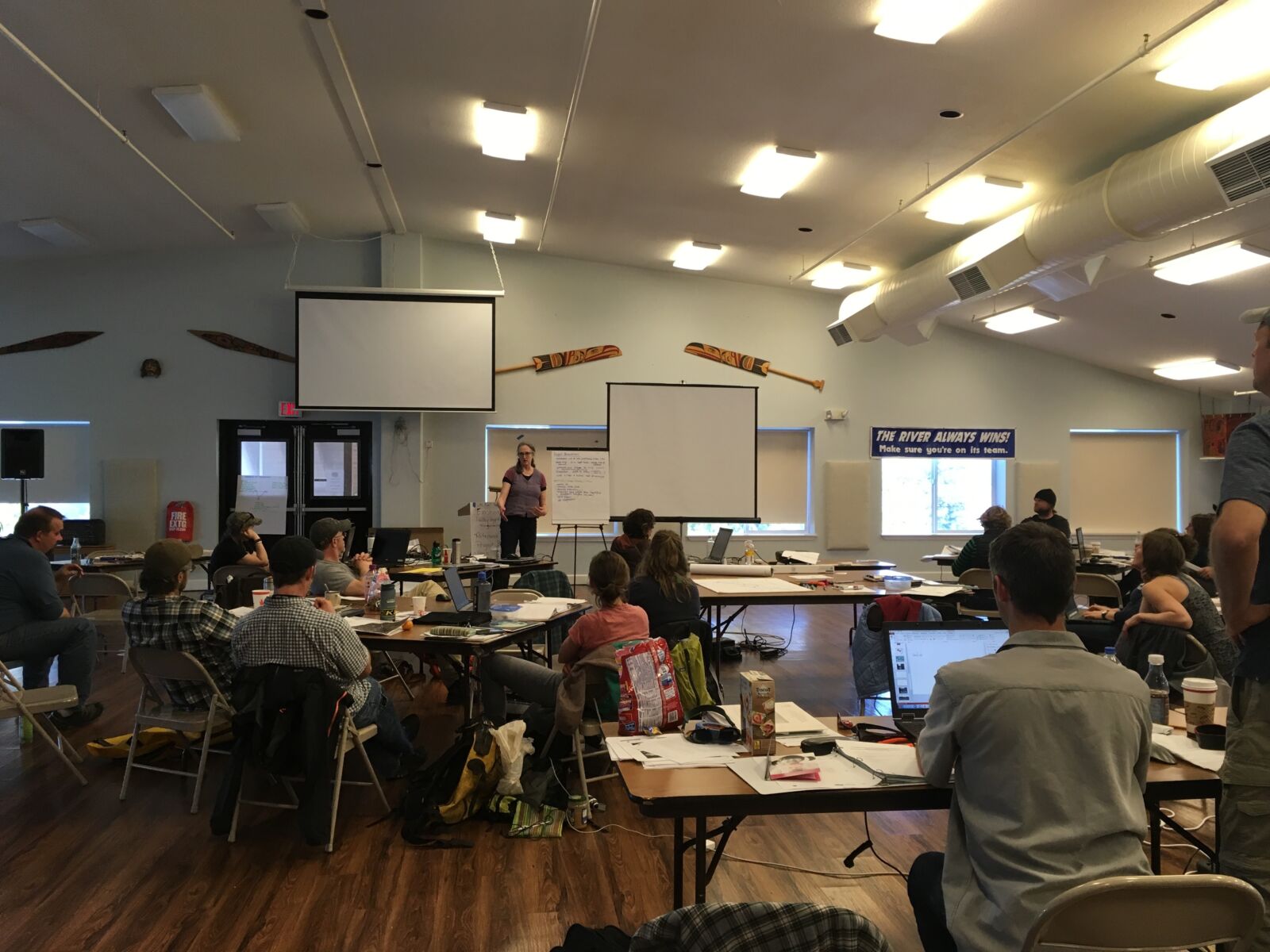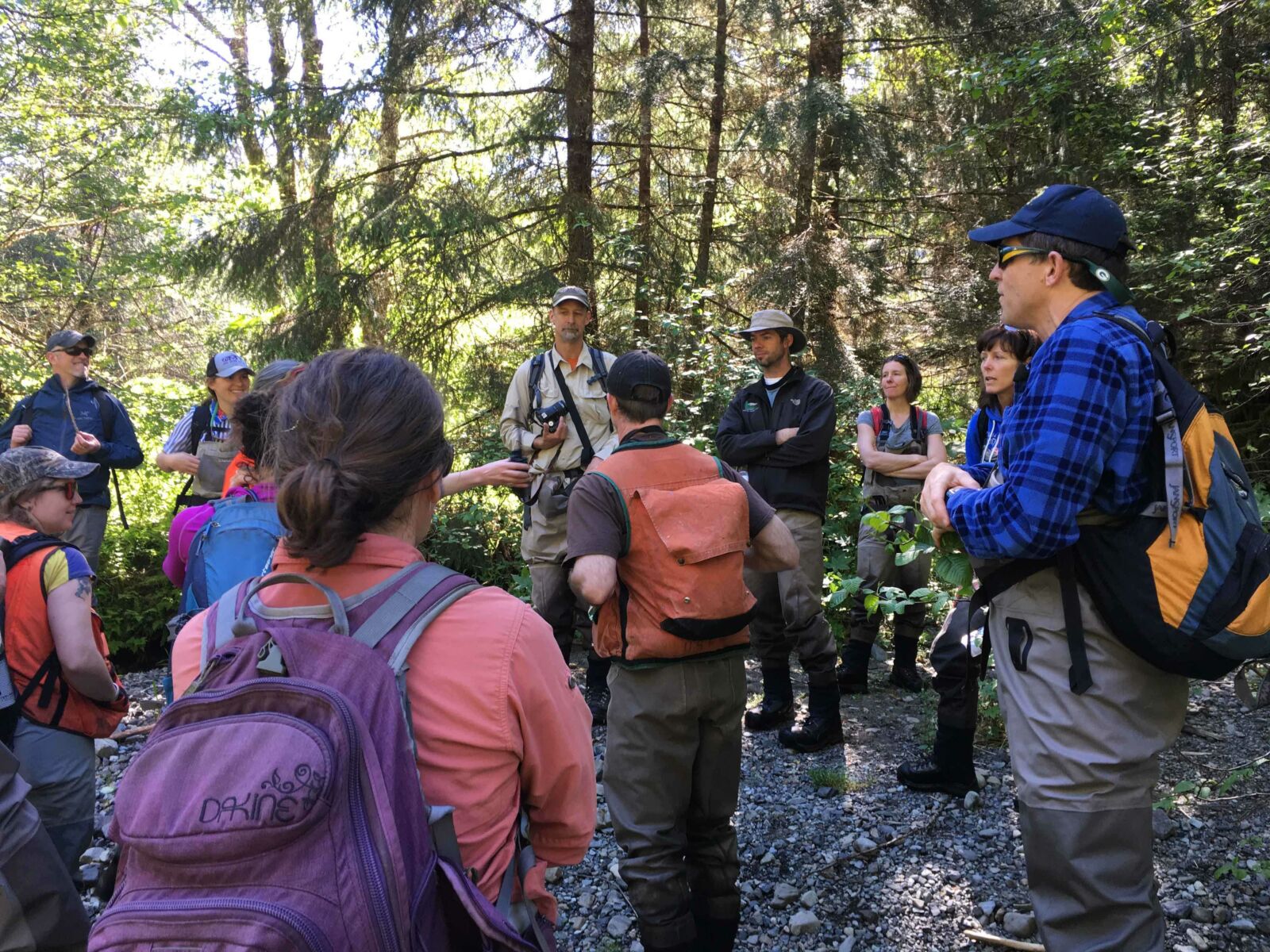With support from the National Forest Foundation’s Community Capacity and Land Stewardship Grant, the Southeast Alaska Watershed Coalition (SAWC) hosted a regional watershed restoration training. The 2016 Southeast Alaska Stream and Watershed Restoration Workshop brought together 21 Natural Resource Management Practitioners from across the region and six experienced instructors from the Pacific Northwest for five days of intensive watershed restoration study, discussion, and field visits on Prince of Wales Island this past May.
Led by a cadre of Restoration Practitioners from the US Forest Service and the US Fish and Wildlife Service based in Oregon, the workshop brought new perspectives on watershed restoration goals and objectives, design, implementation, and monitoring. Instructors shared their expertise and experience working on watershed restoration efforts throughout the Pacific Northwest, and facilitated lively and informative discussion around the opportunities, needs, challenges, and successes of restoration in Southeast Alaska.

Resource Managers have identified watersheds on the Tongass National Forest and elsewhere in Southeast Alaska that have sustained impacts to fish habitat as a result of past logging and development practices. The goal of this training was to build the capacity of the region’s Resource Managers to design, implement, and monitor projects aimed at restoring ecological functions and habitat on the region’s watersheds.
Participants spent a day in the field on Prince of Wales Island at a reach of Staney Creek. They reviewed previously collected stream data and examined current hydrologic processes and habitat conditions on the reach before returning to the classroom to design a potential restoration project for the site.

Participants also made field visits to completed stream restoration projects on Gandlaay Haanaa, Harris River and Twelvemile Creek to see restoration practices in action, and discuss lessons learned and project successes and challenges.
The training included a session on aquatic resource mitigation in the state of Alaska, and opportunities to carry out restoration through SAWC’s proposed Southeast Alaska Mitigation Fund. The week-long gathering provided an opportunity for the region’s Resource Managers to learn new skills and build partnerships among a variety of entities working to improve the ecological health and function of Southeast Alaska’s watersheds.
This project was made possible with funding
support from the National Forest Foundation and the US Fish and Wildlife
Service Juneau Field Office; and with support from our partners at the US Forest
Service, Tongass National Forest.

